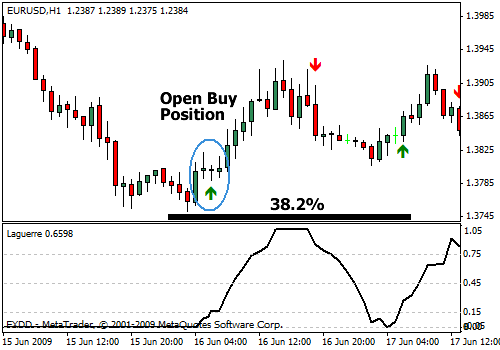A simple Fibonacci Swing trading strategy
Post on: 16 Март, 2015 No Comment

Some of the most profitable and consistent trading strategies are often those that are simple. The simplicity of the trading system is what puts off many traders. But of course this is a general tendency where traders think that the more complicated a trading system is, the better it performs. The Fibonacci swing trading strategy is perhaps the most simplest of trading strategies that uses the most minimal of indicators (2 Moving averages) and the Fibonacci retracement tool. The strategy works best on the 4-hour timeframe and is ideal for swing trading with an average trading hold period lasting for atleast a week.
Fibonacci Swing Trading Chart Set Up
For the chart set up, we make use of the H4 time frame with two moving averages plotted.
- 100 MA (which replicates a 20 period weekly moving average)
- 20 MA
For plotting price action, using the Heiken Ashi candles offer the best results as it is indicative of the trend and doesnt take too much of analysis into the candlestick patterns that are being formed.
The trading strategy is a trend following system which signals pullbacks for entry. On the basis of the 100MA, the weekly longer term trend is always in focus, while the MA(20) plots the short term (H4) average price.
Fibonacci Swing Trading Chart Set Up
Fibonacci Swing Trading Strategy Criteria
The first step is to identify the longer term trend on the basis of price action relative to the 100MA and the slope of the 100MA. A simple way to identify the prevailing trend is to scan the chart from left to right. If price has been moving from the bottom left of your screen to the upper right, it indicates an uptrend (or if price is moving from the top left to the bottom right, it indicates a downtrend).
Within the timeframe (H4), identify a swing move that comprises of sharp upward price action (or downward).
After this main swing move is identified, make sure that the 100MA is sloping up (or down). The slope of the 100 Moving average gives us an indication on the strength of the trend. Once the main swing move is identified, using the Fibonacci retracement tool. measure this swing move. For the Fib levels, we use the following:
61.8%, 38.2%, 50%, 127.2%, 161.8%
Plotting Fib Retracement Swing Move
Now that we have everything set up, the idea is to pick the pullbacks. Pullbacks are nothing but temporary pauses or counter trend moves (known as corrections to the trend). Trading pullbacks offer a safe entry into a trend rather than picking tops and bottoms. In the Fib Swing trading strategy, we use 38.2% and 61.8% as the entry points for the pullback and use the 127.2% and 161.8% as the target price.
The slope of the 100MA is what determines when to enter a position. For example, if the 100MA is steep and sloping upwards, an entry can be initiated when a pullback to 61.8% is identified. In cases where the 100MA is flat, we simply wait for the trend to gain strength again and then take an appropriate entry (either at 61.8% or 38.2%). The chart below demonstrates a weak entry and a strong entry.
Fib Swing Strategy Determining Entry
After a strong entry is identified, enter either at market or at the high of the most recent candle with stops at the most recent low. In the above example, stops could placed a few pips above the 50% mark of 1.65363, close to the recent lowest low.
For targets, we make use of three targets. 100%, 127.2% and 161.8%. Typically, with this trading system three units of trade size can be initiated. Example, 3 lots, or 0.3 lots or 0.03 lots. The positions are closed at 100%, 127.2% and finally 161.8%. When the second trade is closed (when price reaches 127.2%) the remaining units stop position is moved to break-even.
- Price can touch 100%, retrace back to entry and then surge higher to 127.2% level
- Typically, when price hits 127.2% it often retraces to either 100% or back to entry
- This behavior can be exploited to take on additional entries
- In most cases price doesnt reach 161.8% of the Fib level. However it cannot be discounted. Therefore, the third trade could either result in the trade being closed to break-even or reaching a very good reward level.
Fib Swing Trading Strategy Trade Example
The above chart shows the 4-hour EURGBP chart.
- A downtrend was identified with the 100MA sloping downwards (not shown in chart due to size restrictions)
- Using the Fib tool, the levels are plotted and we see a spike to 61.8% of the retracement. Because price closed below the 100MA, we place a pending sell order at the low with stops at high of the spike or at 50%. Targets are set to 100%, 127.2% and 161.8%
- Price quickly hits the 100% level target
- Price moves further down to the 127.2% target level
- A bit of retracement to the 100% level and then price drops down to the 161.8% target level
The opposite set up would hold true for long positions.
Why trade the Fibonacci Swing Trading strategy
- Slow moving price action
- It can take days to weeks for price to hit its target
- Not ideal for impatient of low confidence traders














